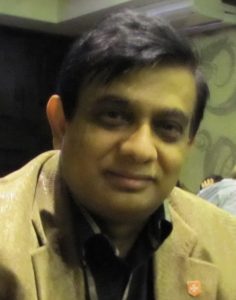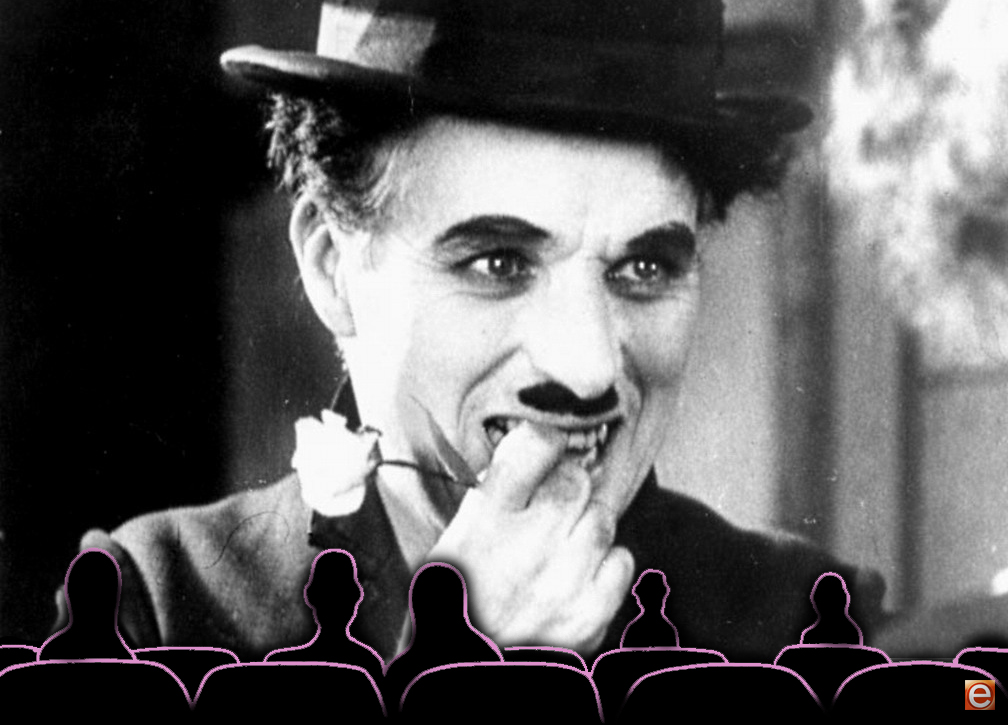
Santi Jayasekera (Mahatma Shanti), PhD, Grand PhD © 2014 IUFS Press
Saint-Petersburg State University of Cinema and Television (Course Work)
Introduction
Talking about Charles Chaplin is easy and hard at the same time. Easy, because his life and activities are described in hundreds of publications, memoirs and studies. His genealogy is traced from great-grandparents on both sides. His life was examined under a magnifying glass up to the intimate details. He wrote “My Biography”. And Chaplin’s creative activity was also studied in details.
At the same time it is difficult to write about Charles Chaplin. Falling under the influence of literature and critical studies, devoted to Chaplin, you unwittingly become a spokesman for the experts and analysts. Therefore, an own idea, though will be based on the study of materials and personal impressions, bears the imprint of subjectivity and personal perception of Chaplin’s creativity.
Acquaintance with the work of Charles Chaplin involves the study of cinema in general. Movies by Chaplin are based on reality, which Chaplin perceives, on events and issues of his time. They are shown the life of a “little man” in the episodes, scenes and situations, usual in content and unusual in expressions and interweaving.
Care and joy are common in people, so Chaplin is understood and accepted everywhere. People have the same attitude to good and evil, humor and sadness.
Choosing a theme of this work is due to familiarity with the work of Charles Spencer Chaplin. Being a citizen of the Republic of Sri-Lanka (formerly Ceylon), which until 1972 had been a Dominion of Great Britain, I perceived a direct impact of cultural activity of a metropolitan country. In our cinemas movies, featuring Charlie Chaplin, were often showed. Therefore, since childhood I have been familiar with the American comedian. We perceived him only as a joker. With age, I began to understand the deeper meaning of his playing.
We were familiar with other Hollywood movies, French and Italian films. But perhaps, due to the simplicity of presentation, or because he is the same poor as we are, Chaplin always remained welcome. Films with his participation have attracted both young and old, educated and illiterate. For many years on the screens of our country we have seen Charlie Chaplin, giving us hope for the best. Characters of Chaplin are poor and defenseless, and many of us were poor and defenseless. He overcame difficulties and it seemed to us that we can survive hard times, too. We were passed his faith in the goodness and humanity. His movies inspired optimism and created a good mood. By our mentality we were excited by melodramatic movies. But critics criticized Chaplin for being too sentimental, too sensitive. However, we should not forget that the peak of Chaplin’s creativity falls on the peak of development of silent films, where was appropriate an emotional, impressive dramatic effect and other expressive means of exposure. Additions that came later to film screenings, sound and music, dialogues and special effects, finally. All this used to be focused in the acting and plot of silent films actors.
I had to visit many countries and everywhere people knew Charlie Chaplin. Directors and actors either imitated his acting, or, starting from his positions, developed their acting technique. Of course, this statement should be referred to the corresponding direction in the cinematography and to the appropriate time.
So, my choice of Charles Chaplin, as an object of the study, seems to me conditioned and compelling.
Biography and creative development.
I see Charlie Chaplin as my acquaintance and this perception, in my opinion, is a distinguishing sign of the acting technique. Chaplin on stage in comical, absurd, but always touching.
His characters are himself in the past poor life, his mother, father, friend, with a penguin gait, which later became a Chaplin’s one.
His ability to transform, the ability to show human relationships in a short scene, is a testament to the deep knowledge of human vices and virtues. In this sense, I see Charlie Chaplin as one of my teachers.
In Buddhism, which I confess, a Master has a decisive role in formation of a student. Buddha was a Master. And so, the value of a teacher in my life has been considered essential.
Exploring creative development of Charlie Chaplin, you can simultaneously learn the skill of an actor, director, screenwriter. Art of Charlie Chaplin is a model, but not a role one, rather a standard to be achieved in the performance.
Charles Spencer Chaplin’s biography describes to us a man who, as they say, is a “self-made man”. His father, also Charlie Chaplin, is a good actor, quite famous in his time and in his London, have gone the way from a stage character – a drinker to an alcoholic in real life.
Mother also started an independent life as an actress. She met her husband, the father of Chaplin Jr., in the theater, too. And married him at sixteen, and at eighteen years old ran away from him to southern Africa with a man who called himself a true aristocrat. Two years later, the future mother of Charlie Chaplin, Lily Harley (her stage name) returned to London being pregnant and incurably ill. Returned to abandoned Chaplin Senior. He accepted Lily Harley and, treated the born child, Sidney, as his son.
Soon Charlie Sr. was invited to perform on the stages of America, and, returned a few years later, he found that his wife had left him again. And again, her marriage fell apart soon, having left the memory in the person of another baby.
Chaplin Sr. was drinking and died of alcoholism in 1901. Apparently, an additional reason of fatal cause was unsettled family life. Though, it is difficult to answer the question, what motives lead to alcoholism. Charles Chaplin himself in “My biography” wrote: “Judging the morality of our family to generally accepted standards is as flat as putting a thermometer in boiling water”. (1)
But Lily Harley lost everything, too. New husband took their common six-month baby and left the family destitute. Hannah Chaplin (aka Lily Harley) can not be called a good, faithful wife. But she should be considered as a good mother. In a short period of relative prosperity and satisfactory health she was a loving and caring mother. Hannah played scenes with them, showed pantomime and took to the musical theater, where she performed. Incidentally, the first appearance of small Chaplin was on the stage where she performed. Mother lost voice during a performance and a host released on the stage a baby Charlie to reassure the public.
Mrs. Chaplin was sick. She often and long stayed in hospitals. While Hannah Chaplin was in a psychiatric hospital, Charlie and his brother Sydney wandered about shelters and distant relatives. Charlie Jr. remembered his childhood: “Mother and all that she had taught him, the shelter, good and bad people. Little Charlie was left on his own.
And finally, when once he made faces in the street, acted a street urchin, he was approached by a man, “Kid, do you want to be an actor?” And in a week nine-years-old Charlie played in suburban music hall together with artists of the variety show “Eight Lancashire guys”.
The biography of Charlie Chaplin is determined by his activity: his work, personal life, hobbies, love, emigration.
From an illiterate teenager, earning a piece of bread from an early age, to a knight of Her Majesty, from the self-taught, having no formal education, to the academic degree of a Doctor of Oxford.
You can not tell the biography of Chaplin, without dwelling on his relations with women: wives, mistresses, casual acquaintances.
Fleeting romances, marriages and divorces, disputes and litigations intertwined with his work. On the one hand, such incidents and attitudes encouraged his creative nature to activity. On the other hand, such adventures and excesses certainly complicated and dramatized his life. In ordinary life, love affairs and casual relationships, are usually condemned. But when it comes to Charlie Chaplin, his biographers are always and certainly on his side in any proceedings. This is the privilege of a talent.
But we must admit that many of the women who fate brought Charlie with, used or wanted to use him for their own purposes.
And, finally, Chaplin, having passed most of the earthy journey, met the one he was looking for. Her name was Oona O’Neill. The daughter of the very O’Neill,
a famous American writer, Nobel laureate. Maybe Charlie and Oona were drawn together due to the fact that Nobel Prize Laureate was also an alcoholic.
Many years later, Chaplin wrote: “Schopenhauer said that happiness was a negative concept. I do not agree with him. Over the past twenty years I have learned what happiness is. Fate gave me a wonderful wife”.
Studying literature and evidences, dedicated to the establishment and development of creativity of Charlie Chaplin, we see that he was born an artist, he had no other life but the life of cinema, and personal and social events were only the background of his scenic existence.
Father is a good actor, but unfortunately, an alcoholic. Mother is an artist, we do not know what kind of, but actress. And, unfortunately, ill. Hannah was incurably ill, long treated in psychiatric hospitals. But she was an actress, the first director for the actor Charles Chaplin Jr.
And the first money he earned on the stage being a child, he was not even six years, replaced mother, suddenly diseased. At the age of ten he already performed in the music hall, where he received his first lessons of skill and discipline. After the music hall was a theater, where he also learned to pronounce texts, monologues, studied pantomime.
He performed in the troupe of a known artistic director and producer Fred Karno. Skits, musicals, sketches, which he played in, all were comedic.
And even in the circus he managed to stand out, and there he received lessons of stage effects and even acrobatics, too.
Being twenty-one years old, Charles Spencer Chaplin was widely known not only among London, but also the British public. Newspapers wrote about him, performances with his participation were always successful.
The head of the troupe Fred Karno in the end of 1910 once again sends a group of his artists to America. In the staff of a small troupe was included young but already well known in England Charlie Chaplin. He gets acquaintanced with America, America recognizes Chaplin.
In 1913, Chaplin signed a contract with “Keystone Film Company”. The contract obliged Charles Spencer Chaplin in the city, county and state of New York “to play roles in movies of the operating companies of the first Contracting Party”.
On February 2, 1914, the first film starring Chaplin “Earning a living” screens out.
And then a thread, a whole cascade of films – “Making a living” – February 2, 1914, “Kid auto races at Venice” – February 7, 1914, “Mabel’s strange predicament” – February 9, 1914, etc.
All in all until 1914 Chaplin had been playing in 35 movies “Keystone Film Company”.
It is clear how these movies were shot, is clear an artistic value of these films. But at the same time it should be clear how to improve mastery of performance, how the authority of the artist was strengthened, how his fame grew.
And although the first film with his participation Chaplin himself did not like, but reviews had a very positive character, for example “A brilliant actor, playing a rogue, a comedian of the highest class.
These films were stamped one or two a week. Shot in real conditions in the city, in the park, among the people. Decorations were constant, it is cheaper.
It is difficult to assess these farces from the position of a modern viewer. But, as one critic wrote: “Perhaps, we would have also laughed in 1914”.
Such movies had the demand. In pragmatic, yet immature culture (I do not even know whether mass culture may be prepared enough), a viewer went to the cinema to relax and laugh. And he got this pleasure.
I doubt if movies of the times of so-called “neo-realism” would have been attractive in those years in America? Would be accepted reasoning by Fellini about psychoanalysis and its author Jung as the basis of cinematography of a new wave, which replaced “neo-realism”? There is time for everything.
During the first year in the “Keystone” Chaplin determined his appearance: his unchanging suit, baggy pants, a tight jacket and shoes. Well, what kind of shoes! A bowler hat, cane, toothbrush moustache and makeup – a scenic image established for twenty years ahead.
Glory of the comedian Charlie Chaplin spread incredibly fast. Cinema queues grew when screening films featuring Chaplin. His fees grew.
There were, of course, failures, too. Inexpressive movies released, misunderstandings occurred and sometimes insurmountable. And no luck in love.
That year, 1914, already in the middle of the year, in the same company “Keystone” Charlie began to stage his own films. He started shooting by himself agreed with the company and left a deposit of $ 1,500, in the case of a film failure.
The movie “Caught in the Rain” (May 1914) should be considered as his first movie, his debut as a screenwriter.
The movie “Caught in the Rain” proved that the levels invented in the “Keystone” did not pass in vain. He could “make” movies, could mount them, make the compositions, compose stories. Chaplin took place as a director, too. The film turned out to be the most popular set by the “Keystone”.
Chaplin successfully organized the work of his actors, created a harmonious ensemble to accompany his solo performance. His creative activity was replenishing with new tricks, pantomime and slapstick finds, and similar to it American options, burlesque.
And plots were very simple, a studio with its bustle and confusion, a repaired house with a heap of absurdities and episodes.
But here we encounter critical notes of social issues.
Here is both bonded labor and disregard of bourgeois for workers. In this unhealthy situation are added inappropriate romances of a hostess and an absurd lover.
All this folds into a kaleidoscope of a comedy. “It’s just a quick-firing gun of laughter. You laugh every second,” – wrote about him a reporter John Morgan.
And suddenly, perhaps, in every creative career one meets an unpleasant word “suddenly”. There is another more unpleasant word – oblivion. But luckily for Charlie Chaplin, it was not addressed to him.
And suddenly. “His word in America reached its climax when critics suddenly attacked him. They blamed everything he did, calling his films vulgar, rude, arrogant and even obscene. He, a poor man, was absolutely heartbroken. But overcame depression and once came out of the dressing room, rubbing his hands. “Well, guys – still smiling slyly, he said – let’s do something else, let them talk, huh?”* Thus began the era of the new Chaplin comedy – then he created pure, smart, sad stories with a fun outcome?”. [1] [2]*
A familiar pattern. Many famous poets and writers, artists and musicians were wounded by unpleasant hostility and misunderstanding. It is worth remembering the history. Pushkin was criticized during his lifetime, and Turgenev and Nekrasov. Well, when the Bolsheviks, came to power, called “to throw him off the side of modernity”. It is sufficient to get acquainted with the opinion of L. N. Tolstoy about Russian writers and poets, including Chekhov and Turgenev.
And Tchaikovsky, and Rachmaninoff? Remember French artists Van Gogh, Paul Gauguin, and how many there were.
At the same time, many connoisseurs of culture, kissed by fame and wealth in life, plunged into oblivion obscenely fast.
And then began Chaplin’s boom in American cinema. I must say that Chaplin was not the only leader in the silent art of those years. In Europe and America over the last 15-20 years, preceding World War I, its new look determined in the art. Prospects have not yet been clearly defined. However, it was possible to predict possible development.
It is interesting what Lenin said: “In all the arts, cinema is the most important”. I do not know how appropriate this slogan in this paper is, however, I emphasize that Lenin had in mind the effect on cinema illiterate Russian masses of those years.
With certain coefficients we can project the value of cinema in the United States also during the boom about Chaplin for the same reasons. Chaplin did not shake public with revolutionary slogans. But his films had a huge impact, social, psychological – call it what you want. He brought joy, he led off people from worries and anxiety. Isn’t that enough?
And then one after the other remarkable cinematographic Chaplin appeared.
So, now we can answer the question put earlier – whether Chaplin had a success in America in the early years of his stay there or not? Whether his creativity was successful or not? – Yes, it was, and success was obvious. The King did not turn out to be naked.
In the study of the biography of Charlie Chaplin the attention was drawn to financial problems, especially in the early years of his work.
In letters to his older brother Sydney, in the causes of transition from one company to another, and in litigation proceedings with the women we see financial trouble, how not to miss, and even greed, can not find a better word.
He knew how to count money and was able to earn them. In the thirties of the last century Charlie Chaplin confidently leads in American cinematography. He is rich in creative asset, however, unstable relationships with their wives and girlfriends. But in the end, Oona O’Neill appeared and Charlie calmed down.
What is the main theme of his work, what he did the author want to show with his films?
First of all, we should note that the main features of the art period of Chaplin are as follows:
– Firstly, there is “the same” character, a timid tramp;
– Secondly, the majority of great films were released during the “silent” movie, which required creating a special expressive form of skill and execution;
– Thirdly, each movie is laced with humanity, morality, compassion for the little man.
Chaplin comedies made a silent movie great. “The comedic gift, in my opinion – is the most valuable asset of an actor, a sign of the highest artistry” – wrote Federico Fellini. (3)
You can, like research on later, post-war events in the cinema, as neorealism, “new wave” (in my opinion, there was not the only one of such waves) easily find and present philosophical or psychological interpretation of the film by Chaplin.
Especially because neo-formalism in art originated on the basis of the philosophical movement of neo-realism, which existed in the United States in the beginning of XX century. And also paying attention to the fate of ordinary people, etc. It would be possible to find the foundations of psychoanalysis, too, mention Jung, that people usually do by analyzing films by Fellini. But do not try to be smart. Let’s remember the name of Alexander Ostrovsky’s comedy “Every Wise Man Stumbles”.
Chaplin is an independent phenomenon in cinema.
As his typical work, you might consider “City Lights”.
The same tramp, in the same pants that are about to fall, the same jacket for growth staggers aimlessly around the city. Meets a blind flower-girl, miserable, too. Then he meets a drunken millionaire and saves his life, when the millionaire tries to commit a suicide. The drunken millionaire in gratitude calls him a visit, crucifies in friendship. Sober, the millionaire does not remember anything and drives a tramp out.
A little tramp tries to earn money to help a blind flower-girl.
Again, that meets the drunken millionaire, drunk and incredibly generous. He gives money to the tramp. But at the same time thieves penetrate into the house of the millionaire.
Sober, the millionaire forgot about his present and suspects the tramp in the theft. The tramp is jailed. But, fortunately for the girl, the tramp manages to give her money for treatment.
After his release from prison funny and pathetic he is again at the flower shop. Recovered girl and another shop girl are watering flowers. Charlie raises a flower fallen into the ditch. The tramp looks at the girl and smiles. She laughs – she found a boyfriend. And the other girls are laughing at him, too.
The tramp comes to her. The girl gives him a flower. But the tramp does not go away. He looks at her, remember Chaplin’s eyes. She seems to have figured out what happened. She pulls out a coin and puts it in his hand and squeezes his palm. And recognizes the hand. Here he is, the same millionaire, a savior. “You? It’s you!”
And then he goes away, turning back. Noble and touching. Where are you going, Tramp?
That’s the whole story. And it must be Chaplin to create on this basis a wonderful memorable film.
Of course, there were talks about sweetness, about sentimentality. The conventions of the movie are clear, but it is necessary to adopt the rules that are suggested by the author.
If, for some art critics, arguing, for example, about an abstract painting by Kandinsky or Malevich, find hidden meaning in camouflaged images, and admire them, then pure human feelings arouse suspicion.
But we love his movies. Movies of this genre, this kind, this type – we like Chaplin movies.
At that time Chaplin was one of the most famous people in the world. Churchill called him the only genius, awarded by cinematography, and put him in a par with Dickens and George Bernard Shaw. (4)
“I am known in such parts of the world, where people never heard of Jesus Christ” – Chaplin on the right could say about himself.
In conclusion, I would like to emphasize that in addition to the natural gift, Charles Chaplin had a happy chance, which he realized. He chose the right path. Talent and work and a good heart – made a great artist.
Of course, his films did not become out of date, as physical laws or general phenomena of nature do not get old. His legacy is transformed, sublimated, creating conditions for preservation of the soul, in order to prevent degradation of a man.
Saying goodbye in print to Charlie Chaplin, Federico Fellini called Chaplin “Adam, from whom we are all make a family tree”.
Literature:
- Charles Chaplin. My biography. M. Arts, 1966, 496 pp. (see p.13)
- Robinson, Charlie Chaplin. Life and Work. 1990, 670 pp. (see p. 128)
- Kukarin A. V. Charlie Chaplin. M. Arts. 1988, 287 pp. (see p. 15)
- Weisman S. Charlie Chaplin, the Story of a great comedian of silent movies. M. EKSMO, 2010, 349 pp. (see p. 298)
- Nadezhdin N. Charlie Chaplin, “Great love of little Charlie”. M. Mayor. 2008. 190 pp. (see p. 182)
- Bailey K.KINO: films that have become events.1994, SPB. Academic Prospect. 394 pp. (see p. 50)
7. 100 GREAT FOREIGN MOVIES. M., VECHE, 2006. 467 pp. (see p. 78)


